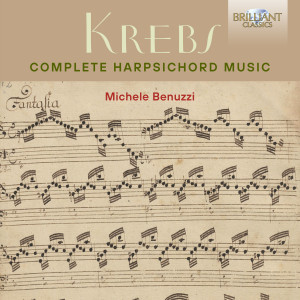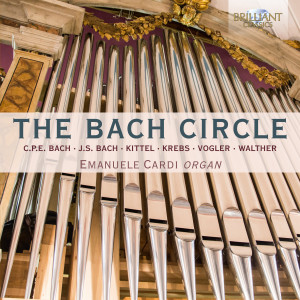Johann Ludwig Krebs
Story
Johann Ludwig Krebs was a composer whose career spanned the end of the Baroque and beginning of the Classical era. In many respects, it typifies the problems many musicians had in coping with the drastic change of style this implies. Since he was an exceptionally skilled writer of counterpoint, he might have ended up with considerably wider fame if he had been born 20 years earlier.
Johann Ludwig was the son of Johann Tobias Krebs, the organist of Buttelstedt, near Weimar, who had studied with J.S. Bach. Father taught son organ, harmony, theory, and counterpoint. The lad was sent to enter the Thomasschule in Leipzig, where J.S. Bach was music director. Krebs general studies and lessons in singing, lute, violin, and keyboard. He remained a singer in J.S. Bach’s choir until 1730.
J.L. Krebs attended the University of Leipzig from 1735 to 1737, took part on an as-needed basis in J.S. Bach’s choir at the Thomaskirche, copyist from 1729-1731,and was the harpsichord player in the university’s collegium musicum, which was also directed by J.S. Bach. Krebs left Leipzig in 1737 to take a position as organist of the Marienkirche in Zwickau, an ill-paid job playing an equally ill-maintained organ. While there, he met and married Johanna Sophie Nackens, daughter of a civil servant there. Soon, they had the first of their children, Johann Gottfried Krebs (1741-1814), an organist who wrote a large number of cantatas in his long-standing tenure as Mittelorganist or Stadtkantor of Altenberg. In 1744, J.L. Krebs moved to Zeitz to become organist there for 12 years. He tried unsuccessfully to become J.S. Bach’s successor. In 1755, he accepted a position as organist to the court of Prince Friedrich of Gotha-Altenberg in Altenburg. The organ was better, the court was more exalted, but the pay was little improvement. Still, he continued to get by and retained the post until death. Family finances were somewhat helped when Johann Gottfried became his assistant organist.
J.L. Krebs had a very high reputation among his contemporaries. J.S. Bach held him in high regard, punning on both their names (Krebs [crab or crayfish] and Bach [brook or stream]) by saying “He is the only crayfish in my stream.” It is not surprising that many of his works, especially his organ compositions, are very much like those of J.S. Bach. His harpsichord music is probably what was best-known of his work in his own time, published extensively, particularly in four volumes of Clavier Ubung. J.L. Krebs also wrote significant quantities of orchestral and choral music. His name and music contributed to one of the most delicious inside jokes in movie music history. To echo the on-screen motion of the giant crab in the film Mysterious Island, with its independently moving legs, Bernard Herrmann orchestrated a cancrizan (i.e. crab-motion) fugue by the “crab” composer, Krebs.
From 1726 to 1735 Johann Ludwig Krebs was enrolled at the Thomasschule in Leipzig, where J.S. Bach was Kantor. While in Leipzig, J.L. Krebs was one of J.S. Bach’s private keyboard pupils, and from 1729 to 1731 he copied performing parts for various church cantatas by J.S. Bach. (Like his father, J.L. Krebs also appears as a scribe in the manuscript complex P 801-3 mentioned above.) In a testimonial (1735) J.S. Bach praised J.L. Krebs not only as a performer on keyboard instruments, violin, and lute, but also as a composer. During his university years he assisted J.S. Bach at the Thomaskirche and played the harpsichord in the collegium musicum. Despite all his Leipzig connections, J.L. Krebs failed in his application to become J.S. Bach’s successor. J.S. Bach allegedly referred to him as ’the only crayfish [“Krebs”] in my brook [“Bach”]’.
Details
- Composer
- Johann Ludwig Krebs
- Date of birth
- October 12, 1713
- Nationality
- German
- Albums
- 3
- Tracks
- 287
3 albums
-

Johann Ludwig Krebs
Krebs: Complete Harpsichord Music
-

Johann Ludwig Krebs
Krebs: Complete Organ Music
-

Johann Sebastian Bach, Johann Christian Kittel and 4 others
The Bach Circle
